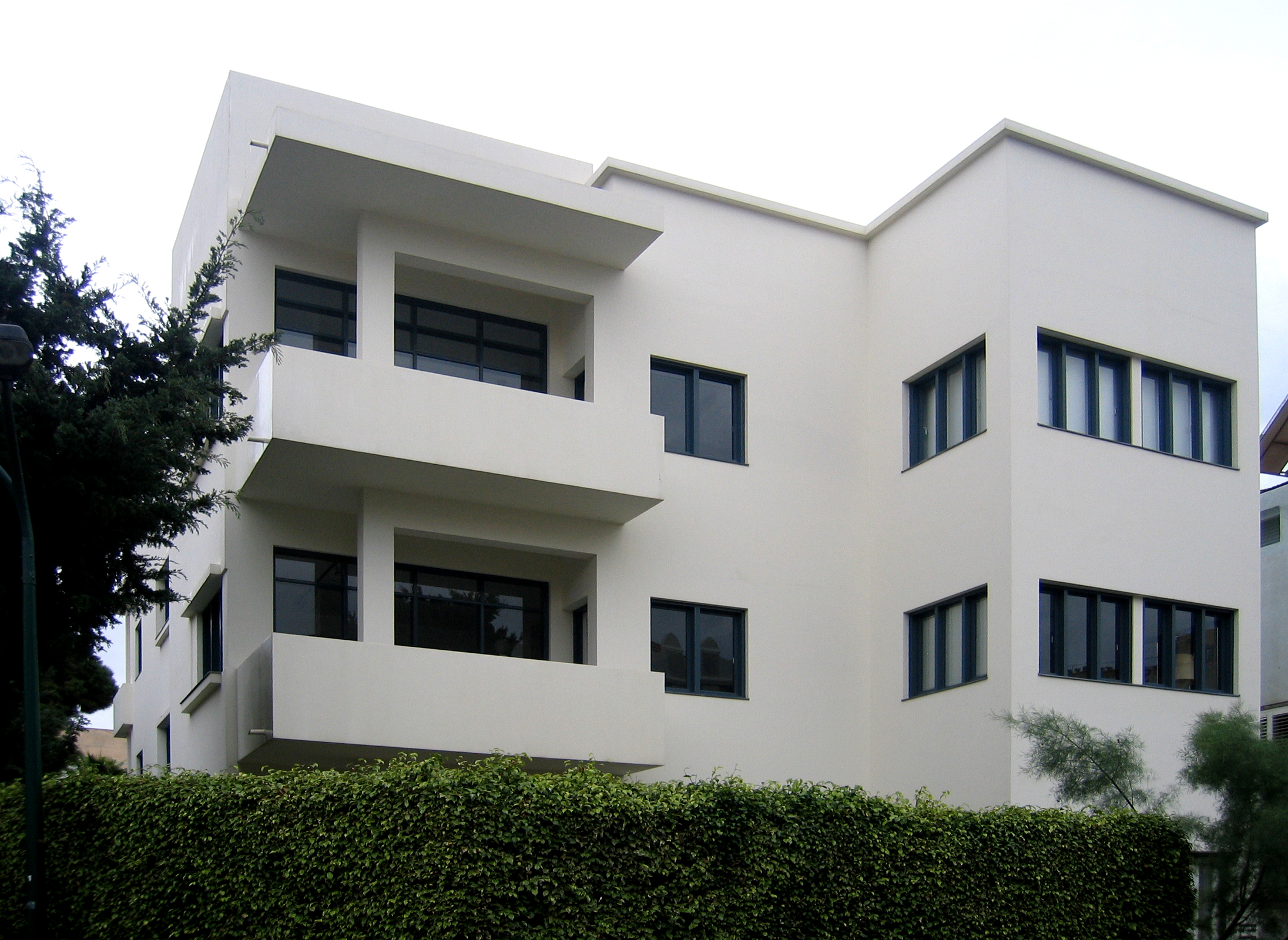After Harding Lawrence left Continental Airlines in 1965, he contacted advertiser Mary Wells at Wells Rich Greene to create an entire new campaign for his infant airline, Braniff. Wells was able to identity the cause of why air travel was so bland and lost its appeal; she pointed out that stewardesses wore black and made the atmosphere of the cabin itself dull and boring. Wells hired Italian fashion designer, Emilio Pucci to make the new uniforms for the Braniff crew, incorporating fun patterns and colors. Wells went on to hire, Alexandar Girad to design the interior of the air crafts. Girard implemented the use of bright colors, interesting shapes and the use of materials like aluminum. The airline was now a vehicle of color, it's fleet came in a variety of colors including lemon, Orange and turquoise. Terminal Lounges also received the Girard touch. Customers sat on some of the finest works of art created by Girard.
http://www.themodernist.com/terminal2/girard.html
History of Design Blog
Monday, December 6, 2010
Sunday, December 5, 2010
Got Milk?
The Got Milk print ads became one of the more recognized ad campaigns. The ads were implemented in attempts to boast awareness and educate consumers about the health benefits of milk. Milk processors witnessed a steady decline in milk sales and wanted to fund a campaign solely dedicated to milk, in attempts to raise demand. The Goodby, Silverstein & Partners ad agency was hired on to create the campaign.
The agency decided to market Milk as being a crucial component at certain times; for example, when ingesting sweet foods like cookies or peanut butter sandwiches. The Goodby team created the infamous tag line "got milk?" It was simple and to the point. The print ads pictured sweet treats with a bite taken from it and the tag line read underneath. The ad team wanted to explore and implement the milk deprivation strategy.
http://www.aef.com/on_campus/classroom/case_histories/3000
Marjane Satrapi, director and writer of Persepolis
After viewing the movie, Persepolis, I became increasingly interested in its creator and director Marjane Satrapi. The film is based of the original graphic novel, Persepolis: The story of Childhood. Marjane wished to portray her experiences of being under the Shah’s rule and the cultural shift toward radical religious government. Persepolis is the first Iranese comic ever published. After she moved to Paris in 1994, Satrapi found herself constantly relaying childhood stories and memories to her friends but Satrapi became increasingly frustrated with the media’s representation of Iran. Satrapi says that she always found herself justifying her nationality and heritage .After completing university; Satrapi’s classmates encouraged her to write about her childhood memories and stories. Satrapi was introduced to the style of graphic novels and admired its use of image and text. Satrapi’s inspiration for writing this book stems from her belief that if we all experienced life in another county we would all hate a little less. In an interview Satrapi is quoted as saying, “That is why I wanted people in other countries to read Persepolis, to that I grew up just like other children.”
http://www.randomhouse.com/pantheon/graphicnovels/satrapi2.html
Wednesday, October 27, 2010
Jules Cheret and Cherettes
After watching the documentary in class about Art Nouveau, I became really interested in the influence and works of Jules Cheret. Cheret was born in Paris, France in 1836. Cheret received little to no education. At the age of 13, Cheret began a 3-year apprenticeship under a lithographer. During 1859-1866, he trained in London. It was there Cheret became interested in British poster design. Cheret was greatly interested in the vivid imagery of Rococo artists like Antoine Watteau and Jean- Honore Fragonard. Cheret perfected the use of single central imagery in his poster compositions and became a major force in advertising. He was commissioned to do several poster ads for cabarets, music halls and theatres. Cheret embraced the female form in a way that hadn’t been done before, the women depicted in the posters were joyous, lively and flamboyant. They adopted the name ‘Cherettes’ and became the most recognizable imagery in Paris during the movement.
Fashion of the Rococo Period
After talking in class about the Rococo Movement and it’s influence on the Art Nouveau, I wanted to research a little more about the fashions worn during the Rococo period. Rococo describes a movement during the 18th century in France. It was a visual trend that emphasized in ornate decoration and unique design. The Word Rococo itself comes from the French words, crocodile, meaning stone and coquilles meaning shell. This references the decorative motifs and symbols used during this movement. The Rococo period is sometimes criticized for being overtly frivolous and excessive. Pastels as well as delicate curving lines and lighthearted imagery characterize the period. The dress if the wealthy women was usually a corset top accompanied by a large full skirt that was heavily decorated. These skirts reached larger than the length of the arm span of their wearers. Hair was usually teased and pinned high on top of the head and covered in heavy white powder. Decoration and embellishments were also found in hairstyle of Rococo women. There were over 1200 hairdressers in Paris in 1769. Make-up became an art form; it was usually caked on to achieve a pale, translucent complexion.
Architecture of Bauhaus
After watching a documentary on the Bauhaus in class, I found it very fascinating that it had such a large impact on the field of design. I decided to dig deeper into the architecture of the Bauhaus, when the school was first established an architectural department did not exist. After some research, I found that the best and largest example of Bauhaus architecture is found in the city of Tel Aviv.

Walter Gropious in Germany founded the Bauhaus School during the 1920’s. The architecture of the Bauhaus followed the general style and design philosophy of the school. The Bauhaus sought to combine fine arts and quality design. A few characteristics typical of Bauhaus architecture are that it favors function over decoration and makes use of space and lines. Critics claim that Bauhaus architecture can only be found in Germany, styles similar to the Bauhaus were deemed the International style. The primary purpose of Bauhaus architecture was to establish social housing for workers. Tel Aviv has one of the best examples of Bauhaus architecture; this is because of the large number of Israeli students that attended the Bauhaus. During the period between 1930s and 1950s, entire neighborhoods and streets were built in the Bauhaus Style. About 3500-4000 of the Bauhaus structures are still standing. These “low density little white flat-roofed boxy buildings” can still be seen amongst the tall contemporary skyscrapers of Tel Aviv.
Tuesday, October 26, 2010
Bauhaus Manifesto
The Bauhaus was founded by Walter Groupius, an architect who influenced the initial philosophy and course offerings of the school. Walter Gropius created an manifesto that outlined the primary intent and aims of the Bauhaus School. The manifesto started out by stating, “The Final goal of all artistic activity is architecture.” The Bauhaus rejected the familiar use of decorations and individual craftsmanship and embraced the use of clean lines. Function became the primary goal of the Bauhaus. Some of Groupius principles include
- most students should face the fact that their future should be involved primarily with
industry and mass production rather with individual craftsmanship
- because we live in the 20th century, the student architect or designer should be offered no refuge in the past but should be equipped for the modern world in its various aspects, artistic, technical, social, economic, spiritual, so that he may function in society not as a decorator but as a vital participant.
The Bauhaus was the first recognized industrial design and became the definition of modern design.
Subscribe to:
Comments (Atom)





